Contents
- 1. Benefits of pranayam
- 2. Practical suggestions
- 3. Stages of progress
- 4. The duration of kumbhak occurring automatically in some states from the Ashtangyoga
- 5. Dangers
- 6. Comparison with other paths of Yoga
1. Benefits of pranayam
1.1 According to physiology
A. A reduction in the heart rate: Respiration slows down with practice of pranayam. As the respiratory rate decreases, the heart rate too decreases. Those with a low pulse rate have low risk of cardiac illness. If a middle aged and healthy individual has a pulse rate of less than seventy beats per minute then it is ideal.
B. Ability to survive without oxygen: While practising pranayam oxygen supply to all the cells in the body is reduced. As a result, even when the oxygen supply is reduced the cells adapt to it and function marginally or survive. Thus if an individual enters the gaganavashesh or turyaga states of the superconscious state (samadhi) then though there is complete cessation of breathing for sometime, the cells in his body do not die.
C. Control over involuntary actions: One can also gain control over involuntary actions of the body with pranayam just as described in ‘According to physiology’. However in this respect pranayam proves to be more beneficial than tratak. The reason for this is that blinking occurs only in the waking state, when the eyes are open. It does not occur during sleep and after closing the eyes. Thus tratak can be practised only in the waking hours. On the contrary, since breathing continues for twenty-four hours, in the waking hours as well as in sleep, practice of pranayam continues automatically. As a result, one can acquire control over the involuntary actions faster.
D.Cure of physical ailments: When an individual is able to control his breathing, he is also able to control the vital energy. He can use the vital energy wherever there is a disease or some anguish. A sattvik (sattva predominant) individual possesses enormous energy and he can direct it towards diseased organs as follows.
-
By touching the diseased part with his fingers
-
By focussing his gaze on the diseased part
-
By concentrating the mind on the diseased part
If particular types of pranayams are performed then 20% of patients with physical ailments are cured while another 30% show improvement. Some examples of diseases in which various pranayams prove beneficial are given below.
-
1. Repeated attacks of cold: Bhasrika, ujjayi (purak, sahaj kumbhak, rechak) and suryabhedan (rechak, purak)
-
2. Bronchial asthma: Anulom-vilom (without kumbhak)
-
3. Digestive disorders: Suryabhedan
-
4. Fever: Shitali, chandrabhyas (with sahaj kumbhak)
Improvement in health: ‘My health has improved with pranayam. I have put on weight and have become strong. My skin has become soft and shiny. My saliva has become sweet. I am now aware of an aura around my head. In Baroda, there were several mosquitoes but they did not attack me. I went to Bangal in 1906 and started political work. At that time my pranayam became irregular. I also fell seriously ill and was saved from the jaws of death.’ – Maharshi Arvind (1)
1.2 According to psychology
A. Increase in concentration, memory and imaginative power: Once one starts concentrating on pranayam, the mind gets habituated to concentration and as a result the memory improves. ‘My experience is that with pranayam the brain gets enlightened. When I was in Baroda I used to practise pranayam daily for five to six hours, three hours in the morning and two in the evening. Then my mind used to function with great imaginative power and zeal. I used to write poetry then, on an average eight to ten lines per day, that is two hundred lines per month. However after pranayam I could write two hundred lines in just half an hour. Formerly my memory was weak; but after pranayam whenever I got the inspiration I would remember the lines of the poem exactly and would write them down at my convenience.’ – Maharshi Arvind (2)
B. Wandering of the mind decreases: Thinking and breathing are interrelated. If the mind does not wander from one topic to another, that is if it is steady then the respiratory rate is reduced. Contrary to this by practising pranayam, as the respiratory rate decreases so does the frequency of thoughts and that itself helps the mind to become steady.
C. Ability to control the mind: With practice of pranayam one gets used to concentrating on breathing. In one technique of pranayam, one concentrates on maintaining a steady rhythm of breathing. Since one gets used to concentrating on breathing, when it becomes rapid one immediately becomes aware of it. This implies that indirectly one becomes aware that either thoughts have increased or emotions are being aroused. Then as one regulates the breathing so that it returns to normal, one can control thoughts and emotions. The biofeedback technique discovered after 1960 A.D. is based on the principle of ‘awareness of psychological changes due to alterations in body functions’. In this technique expensive instruments are used to record blood pressure, body temperature, muscle tension, etc. On the other hand our sages had discovered the simple cost free technique of ‘concentrating on breathing’, thousands of years ago.
Since during pranayam breathing is reduced, the oxygen supply to the brain is less. Less oxygen supply to the brain slows down its functions. Hence the waking state gradually starts decreasing and it facilitates entering a state of meditation. In one of the techniques of hypnosis, to reduce the oxygen supply to the brain, the carotid arteries are compressed for half to one minute. This reduces the oxygen supply to the brain and hence the wakefulness decreases and a hypnotic trance is induced. Since the above technique of hypnosis induction is dangerous, it is now obsolete.
D. Going into meditation: While practising pranayam the concentration is on breathing. This is akin to concentrating on a particular object during meditation. However when meditating on an object (the object of concentration) is usually fixed whereas in pranayam the mind concentrates on the rhythm of respiration. It is easier to concentrate on a moving than on a fixed object. Hence by concentrating on pranayam the chances of going into meditation are enhanced.
E. Cure of mental illnesses: As per the study reports, if particular types of pranayams are performed then 3% of patients suffering from minor mental illnesses are cured while another 5% show improvement. Chanting The Lord’s Name proves more useful than pranayam in mental illnesses.
1.3 According to the science of Spirituality
A. Effects on the subtle body: Postures (asans) generally have an effect only on the physical body. However pranayam has effects on the subtle (mental) body as well. The organs are under the control of the mind and the mind under that of the vital energy (pran). Hence once control over vital energy is acquired, the mind and organs are brought under control. Purification of channels (nadishuddhi) too occurs with pranayam.
B. Spiritual progress: The energy loss occurring during the processof respiration can be avoided by practising pranayam. That energy can be utilised to make spiritual progress. [Refer ‘Science of Spirituality: Chapter 38 – Path of Activation of Spiritual Energy (Kundaliniyoga)].
C. Activation of the kundalini (spiritual energy): If one performs various bandhas along with kumbhak then it helps the kundalini to get activated. More information on this is provided in ‘Science of Spirituality: Chapter 38 – Path of Activation of Spiritual Energy (Kundaliniyoga)’. One example of activation of kundalini is as follows. The uddiyan bandha changes the downward flow of apan vital energy and unites it with pran and saman vital energies. As a result, the dormant kundalini gets activated and the udan energy helps the pran or kundalini to flow upwards through the Sushumna channel.
D. A reduction in the raja component: Movement occurs because of the raja component. If movements decrease then automatically the raja component too decreases. For example movements decrease during sleep so the raja component decreases and the tama component increases. When performing pranayam, since the movement of all cells decreases, the raja component decreases. However since at that time one is in the waking state the sattva component increases.
E. Control over the mind: The mind is used to material objects since several births. Hence no matter how much one studies Spirituality due to the firm belief that happiness lies in material objects it is far too difficult for the mind to digress from them. If one diverts or tries to divert the mind away from objects even for a moment, one becomes very restless. Since one is habituated to keeping the mind steady with such objects, that is since the mind feels at ease experiencing the pleasure out of such objects, if one tries to withdraw from them, one experiences intense unhappiness, that is feels restless. It is because of this that Samarth Ramdas Swami has said, ‘When the embodied soul does not get material pleasure it becomes restless’ and ‘O man, if you wish to acquire happiness (Bliss) then refrain from material objects forever as they induce unhappiness. If you are clever enough then sing devotional songs (do spiritual practice) of my Lord Rama. This will keep you happy (Blissful) forever. Never again will you be aggrieved. You will become immortal’.
Now to get out of material pleasure is a very difficult task. At the same time Samarth says that there is unhappiness in material pleasure, then how should one strike a balance? How will one realise that real happiness lies in surrender of such pleasure, without refraining from it even for a moment? This is because for past several births the mind is used to such pleasure and believes that it is under the control of organs. So it thinks that giving up material pleasure is next to impossible. To make this possible pranayam has been recommended. By practising it one slowly realises that one is controlled by vital energy (pran) and not the organs. Also as the vital energy is gradually steadied one begins to experience Bliss and also realises that illusory material pleasure is related to place, time and objects. One also becomes aware that illusory happiness depends on many things and the Bliss one gets from pranayam is independent of objects.Control over vital energy causes concentration and vice versa. However concentration does not mean the thoughtless state.
One might ask, what is the use of pranayam to the one who has decided to make spiritual progress? The fact is that such a firm decision to make spiritual progress is very rare. Hence, one is led from various acts such as pranayam, etc. towards achieving concentration.
F. Development of the stance of a spectator (sakshibhav): Thoughts accompany breathing. However once one gets used to viewing breathing with the stance of a spectator one is also able to look at one’s thoughts with the same attitude. Eventually a stage is reached when one observes one’s existence with the same attitude.
G. Understanding the language of sound (nadabhasha): The language of sound depends on breathing. Since with pranayam one acquires control over breathing one understands the language of sound as well. Thus one can speak in any language,even that of animals and birds. [With tratak one can comprehend the language of light (prakashbhasha.)]
H. Knowledge of the three dimensions of time (trikal): ‘There is a science called “Svaroday” based on overcoming vital energy (pran). The migratory activity of animals is best studied based on it. Besides one can also perceive the knowledge of the three dimensions of time, difference between right and wrong, auspicious moments (muhurts), dreams, etc. based on this science. There are two notes namely that of the sun (suryasvar) and the moon (chandrasvar). When breathing occurs through the right nostril it is believed that the sun note or flow is operational while when breathing occurs through the left nostril the moon note or flow is said to be active. With subtle study on the sun-moon notes various facts have been put forward.’ (3)
I. Longevity: ‘The Swami said, “The number of breaths of every living being in this world, are predetermined. Once they are complete it has to quit. Those who feel they should not leave should preserve the same number of breaths for a longer period. That is, with pranayam they should reduce the number of breaths everyday and remain healthy, breathing as minimal as possible. Once one acquires control over the vital energy, respiration continues at a slow pace almost unconsciously. The yogis too attain the superconscious state (samadhi) in the same way controlling the vital energy and prolonging the predetermined breaths even for several centuries”.’
‘When one realises that the time of death is approaching, one should breathe in through both the nostrils and hold the breath. Later when the moment is overcome one should expire with half the speed. In this way Shrihari Changdev Maharaj lived for 1400 years.’ (4)
Some misconcepts about longevity obtained through pranayam
-
‘On an average the rate of breathing is 15-16 breaths per minute. If one reduces it by practising pranayam or kumbhak, it can become 1-2 breaths per minute. This means that life will be prolonged 8 to 16 times. Pranayam means prolonging the lifespan by the limited and minimal use of the number of breaths bestowed by Nature. In other words, accepting this is rather difficult because in the first part of bhasrika pranayam and the act of kapalbhati one needs to breathe rapidly 100-150 or more times per minute. This means that with this variation the span of life is reduced 10-12 times. Thus by preaching these variations the old texts have made the same concept controversial.’(5)
-
The concept of longevity based on Gherandsanhita: ‘The Gherandsanhita when explaining the importance of kumbhak proclaims that only by reducing the duration of inspiration does man acquire longevity. There is a mention that the human body according to its past actions is 96 times as broad as its finger and its usual breath travels about 12 fingers beyond the body. It is also said that the same breath travels 16 fingers when singing, 16 fingers when eating, 24 fingers when walking, 30 fingers during sleep, 36 fingers during sexual intercourse and even further during exercise. The less the distance of the breath from the body the longer is the lifespan; on the contrary once the distance increases, the lifespan decreases proportionately.
Naturally if the breath remains only in kumbhak then death will never ensue. When the breath remains within the limitations of the body, it is referred to as “keval (automatic) kumbhak” in the Gherandsanhita.
Thus another reason for longevity or immortality is given in the Gherandsanhita. If that is so then why is one told to practise various yogic techniques such as bhramari, bhasrika and other pranayams, uddiyan bandha, nouli, shunya (zero) kumbhak [in which the inspired breath (rechak) is regulated and prolonged or expired and held that way for quite sometime]? This looks very inconsistent. Hence instead of accepting these concepts as the truth, one should remember that they are the faltering steps of the one trying to glorify them immensely or mere exaggerations made to promote the theory.’(6)
Reasons for misconceptions about the facts mentioned above.
-
1. In a session of pranayam, bhasrika and kapalbhati is practised for a very short while. As a result, its specific benefits are definitely obtained. In addition, though due to rapid breathing for a short while the lifespan is reduced by 0.0001% yet the other pranayams practised along with them for a longer period facilitate the prolongation of life.
-
2. On account of the bandhas practised in both bhasrika and kapalbhati, specific benefit of the bandha too is obtained along with that of the pranayam.
-
3. No such false statements have stood the test of time. The fact that these statements have persisted indicate that they are the truth.
The breath of an average person ceases at the time of his death. However as the body and mind is habituated to kumbhak they can survive without breathing and thinking. It is only in keval kumbhak that a yogi remains in a state of super consciousness.
2. Practical suggestions
2.1 Restrictions
One should not perform pranayam in the following circumstances.
-
When one is hungry and/or thirsty or the stomach is full
-
When the nose is blocked due to cold, one has wheezing or cough
-
When the mind is overwhelmed with anxiety, depression or excitement
-
When exhausted
-
When feeling sleepy
-
When suffering from constipation.
2.2 Place
In the beginning, if possible one should practise pranayam during the day in an open space under a tree since the concentration of oxygen there is higher than in a closed room. If this is not possible then practise pranayam in a well ventilated room. Initially when reducing the breathing, if the air inhaled in the lungs is pure then one does not experience distress.
2.3 Time and period (kal)
Pranayam may be performed anytime, even at night. If possible, one should do it in the evening because at that time atmospheric pressure is less and this facilitates breathing. One should commence pranayam in the Vasant season (in the month of March or April) or in the Sharad season (in the month of September or October).
2.4 Seat (asan)
One should sit on deerskin, tiger skin or a white folded blanket placed on a seat of grass (kushasan) or a mat, covered with washed cloth.
2.5 Clothing
It should be loose and minimal.
2.6 The stomach should be empty
One should practise pranayam on an empty stomach, that is two hours after eating a snack and four to five hours after a meal. After performing pranayam one can eat after a lapse of half to one hour.
2.7 Procedure
-
When performing any kind of pranayam one should sit in sahajasan (the ease posture), padmasan (the lotus posture), siddhasan (the posture of an ascetic) or svastikasan (the benevolent posture).
-
One should sit facing either the east or the north.
-
The head, neck and body should be in one straight line.
-
Breathing through the nose: Excluding shitali and sitkari in all the other types, one should breath only through the nose.
-
In the beginning, one should perform kapalbhati thrice so as to overcome obstacles in the respiratory tract.
-
Types of pranayam: In the beginning, one should perform ‘purak–rechak–purak’ slowly. After one or two months one should follow the purak–kumbhak, rechak / purak’ pattern. Then after another one or two months one should continue with the ‘purak–kumbhak–rechak–kumbhak–purak’ pattern.
-
Matching one’s temperament: ‘The study of pranayam should always be “tailor made”, and not “readymade” because character and personality are the decisive factors. Beginners should follow the pattern of “purak 6: kumbhak 8: rechak 5” as advised by Goraksha. According to physiology, this proportion (6:8:5) is closely linked to the natural pattern of breathing. Hence there are no chances of its ill-effects.’(7)
-
To make pranayam rhythmic one should not inspire or expire completely.
-
‘While practising pranayam it is absolutely essential to perform some bandhas. When learning pranayam, from the beginning till the end it is necessary to perform mulbandha (constriction of the anal opening). At the end of purak while practising full kumbhak, jalandhar bandha (compressing the chin firmly against the jugular notch, in the neck), jivha bandha (raising the tongue and touching it to the throat) and contracting the part of the abdomen near the navel called “uddiyanpith” should be performed. This is called the uddiyan bandha while performing purak. After completion of kumbhak, the jivha and jalandhar bandhas are stopped and rechak is performed. At that time only mulbandha persists. At the end of rechak, jalandhar, jivha and uddiyan bandhas are again performed along with shunya or bahya kumbhak.’(8)
-
The six actions (shatkarmas) and postures (asans): If the six actions and postures are to be performed, they should be done first and finally shavasan (the corpse posture) should be practised.
2.8 What should be the frequency of practice?
In the beginning, five rounds of the chosen pranayam should be practised. Later, gradually the number of rounds should be increased to twenty.
2.9 Thoughts during pranayam
A. For those believing in God: They should do chanting. Prayog Parijat quotes the following –
पूरके विष्णुसायुज्यं कुम्भके ब्रह्मणोन्तिकम् ।
रेचकेन तृतीयन्तु प्राप्नुयादीश्वरं पदम् ।।
Meaning: When performing pranayam one should meditate on Vishnu during purak, Brahma during kumbhak and Shiva during rechak. Their seats are the chakras at the level of the navel, heart and crown (Sahasrar) respectively. Some disciples meditate on their Sadguru at all the three times.’(9)
B. For atheists
-
They should either think about something useful like ‘good qualities are entering me’ during inspiration and ‘my bad qualities are being expelled’ during expiration or should concentrate on the rhythm of respiration.
-
‘Concentration on the breath (prandharana): Concentrating on the breath is called “prandharana”. It is performed by counting the number of breaths, by becoming aware of the movement of air during respiration or by experiencing the cool or warm touch of the breath against the palate. This is a very easy and natural method of steadying the mind. In the science of pranayam, this concentration is expected.’
-
The use of Om: ‘One thinks of the syllabic foot “u” during inspiration, “m” during kumbhak and “a” during expiration.’
-
Ajapajapa: ‘In twenty-four hours, that is in one day and night every human being breathes 21,600 times. The sound “so” is generated during inspiration and “ham” during expiration. Every human being thus unknowingly continues to chant the mantra “So’ham” or “hamso”. This itself is the Gayatri mantra named “Ajapa”. Being aware of this is itself a kind of study of Yoga.’
3. Stages of progress
A. A decrease in the output of urine and stool.
B. Pranayam and Path of Activation of Spiritual Energy (Kundaliniyoga): ‘When the mind achieves concentration there is equalization of pran and apan vital energies. This itself is called kumbhak. When keval kumbhak is achieved, breathing stops. The pran vital energy has no function thereafter. So it tries to return to its original site, the Sahasrar. It has to travel through the Sushumna channel. Since for several births this attempt is not made, the difficulty it has to face in the Muladhar is called “its attempt to straighten the kundalini (spiritual energy) with jolts” in flowery yogic language. Hence in the holy text Dattamahatmya H.H. Shri Tembe Swami has said, “So long as the pran vital energy does not reach the Sushumna channel in proportion to the efforts of a seeker practising Yoga, those efforts are in vain”. Saint Eknath has also expressed the same point in other words in a devotional song (arti) as “When even the para mode of speech ceases to exist, what is the motive left? It is the end of the cycle of birth and death.”
Later the real test occurs when the pran vital energy reaches the Adnya chakra. There, one acquires supernatural powers (siddhis) and the capacity to enjoy any type and amount of happiness. However rarely does one not fall prey to such attachment, due to the grace of the Guru and accomplishes one’s lifelong efforts. Only after successfully penetrating chakras serially from the Adnya to the Sahasrar does one really become a Sadguru. That is real liberation when still embodied (jivanmukti). ’ – H.H. Kane Maharaj, Narayangaon.
C. Deciding the duration of purak, kumbhak and rechak by counting numbers in the mind gradually: Different texts give different numbers. One can perform inferior, moderate and superior types of pranayam depending upon one’s progress.
| Inferior | Moderate | Superior | |
|
1. The amount |
|||
| A. Purak | 12 | 16 | 20 |
| B. Kumbhak | 48 | 64 | 80 |
| C. Rechak | 24 | 32 | 40 |
| 2. Physical signs | Rise in body temperature, sweating |
Tremors in the spine or hands, shivering of the body |
Frog leaps, floating, finally there is steadiness |
D. A decrease in the speed of breathing: When breathing occurs only four times a minute one is aware of only the pure ‘ego’.
E. According to the duration of kumbhak: The duration of kumbhak gradually increases, stepwise. The more the kumbhak the greater is the period when the tendencies of the subconscious mind are overcome. The table below gives the stages of progress (states) and their features.
| Arambha- vasta |
Ghatavastha | Parichaya- vastha |
Nishpanda- vastha |
|
| 1. Minimum duration of kumbhak |
10 minutes | 1 hour | 2 hours | 8 hours |
| 2. External signs |
Waking state |
Sleep | Deep sleep | Corpse like state |
| 3. Spiritual experiences |
||||
| A. Happiness / Bliss |
Happiness | Bliss | Bliss for a longer period of time |
Serenity |
| B. Sound | Tinkling | Deafness | Drum beats at the mid-point between the eyebrows |
– |
| C. Others | Prespiration, tremors |
– | – | – |
4. The duration of kumbhak occurring automatically in some states from the Ashtangyoga (Eight fold Yoga)
| The state | The average duration of kumbhak |
| 1. Introversion (pratyahar)* | 30 seconds |
| 2. Concentration (dharana) | 2 minutes |
| 3. Meditation (dhyan) | 30 minutes |
| 4. Superconscious state (nirbij samadhi) |
8 hours |
* Preventing the contact of sense organs with objects.
5. Dangers
A. No spiritual practice can cause harm to a seeker. However if pranayam is not done properly then it could lead to problems like cough, headache, earache, eye strain, indigestion, etc. If a seeker in the primary stage does kumbhak (holds his breath), specially the bahya (external) kumbhak from pranayam, deliberately for too long then he could lose consciousness due to a decrease in oxygen and increase in carbon dioxide and at that time there is a danger of some brain cells suffering from permanent damage. Hence Gulabrao Maharaj has said –
‘In the science of Yoga who is a learned fool ? The one who practises postures (asans), pranayam, etc. without following the restraints (yam) and regulations (niyam).’(10)
The same tenet is also applicable to those practising silence of speech and silence as of wood. [Yam and niyam are the first two parts from the Ashtangyoga (Eightfold Yoga) of Patanjali and are related to the mind. [Refer ‘Science of Spirituality: Vol. 16 – Path of Meditation (Dhyanyoga)’.] A quote from the Hathayoga pradipika 19/265 says,
प्राणायामादियुक्तेन सर्व रोगक्षयो भवेत् ।
अयुक्ताभ्यासयुक्तेन सर्व रोगसमुद्भव: ।।१९।। – हठ योग प्रदीपिका १९/२६५
Meaning: If pranayam is practised in the correct way then all illnesses vanish. However if pranayam is done incorrectly then all diseases occur.
B. When performing pranayam, during kumbhak a thought in the mind persists consistently and till kumbhak is completed there is a possibility of the person behaving as if insane. To avoid this from happening, it is better to chant The Lord’s Name or to concentrate on the breath, during pranayam so as to keep the mind thoughtless.
6. Comparison with other paths of Yoga
A. In the Path of Transfer of Energy (Shaktipatyoga) mostly one enters the superconscious state (samadhi) after bahya (external) kumbhak while in the Path of Devotion (Bhaktiyoga), one enters the superconscious state mostly after antar (internal) kumbhak.
B. If one does only pranayam as spiritual practice then maximum purification of the physical body and vital energy body (prandeha) that can occur is 20% and 30% respectively. The same amount of purification can occur with any other spiritual practice. With pranayam, purification of the mental body, causal body (karandeha) and supracausal body (mahakarandeha) can occur upto a maximum of 10%, 2% and 1% respectively. However with the grace of the Guru (Gurukrupa) purification of the physical, vital energy, causal and supracausal bodies can occur upto 20%, 30% and 100% respectively. For more information refer ‘Science of Spirituality: Chapter 40 – Comparison of the Various Paths of Yoga’.
Reference:
‘Path of Deliberate Rigour (Hathayoga)’, published by Sanatan Sanstha.
Santanche Atmacharitra. Second edition, September 1989. Author: K.V. Belsare. Publisher: Tridal Publishers, Near Prarthana Samaj, Mumbai 400 004.
[1]. Pg. 211 [2]. Pg. 210
[3]. Vol. 10, Pg. 245 First Edition, Bharatiya Sanskrutikosh. Publisher: Pandit Mahadevshastri Joshi, Secretary, Bharatiya Sanskrutikosh Mandal, 410 Shanivarpeth, Pune 411 030.
[4]. Atmadnyanacha Onama Shri Sadguru Paramhansa Vedebaba Maharaj. First edition, Tuesday 13, February 1991, Pg.129. Publisher: Mr. Uday Bhaskar Kasrekar, Tilak Road, Bid.
Manahasvasthyache Prabhavi Sadhan Pranayam. Second edition, 1987. Author: Sadashiv P. Nimbalkar. Publisher: Mukund Bedekar, Yogvidya Niketan, Shri Samarth Vyayam Mandir, Kale Guruji Marg, Gokhale Road (North), Dadar (West), Mumbai 400 028.
[5]. Pg. 4 [6]. Pg.5
[7]. Pg. 87.
[8]. Arogyasathi Yoga. Pg.138. Author: Sadashiv P. Nimbalkar. Publisher: Mukund Bedekar, Yogavidya Niketan, Shri Samarth Vyayam Mandir, Kale Guruji Marg, Gokhale Road (North), Dadar (West), Mumbai 400 028.
[9]. Shastra Ase Sangte. First edition, fifth reprint – October 1994, Pg. 21. Vedvani Publications, Kolhapur – 416 010.
[10]. Sadhubodh: Shri Gulabrao Maharaj Virachit Prashnottaratmak Sukti Ratnavali Ashtamayashti, Pg. 24. Publisher: Shri Dnyaneshvar Madhuradvait Sampradayik Mandal, Dahisath, Amravati.

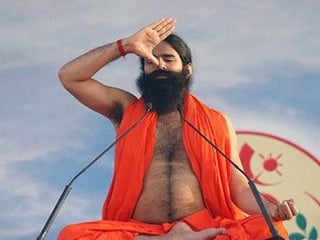
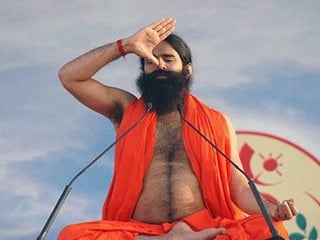 How does pranayam facilitate activation of the kundalini?
How does pranayam facilitate activation of the kundalini?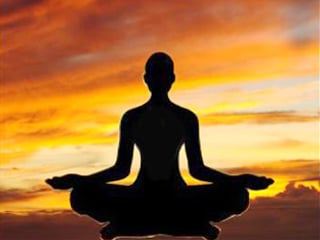 Righteousness - key to control desires
Righteousness - key to control desires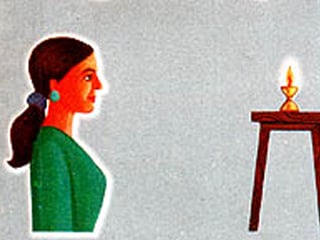 How does tratak help in increasing ones sattvikta?
How does tratak help in increasing ones sattvikta?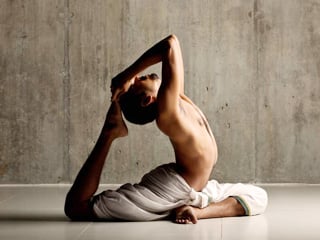 What is the motive behind enduring pain in Hathayoga?
What is the motive behind enduring pain in Hathayoga?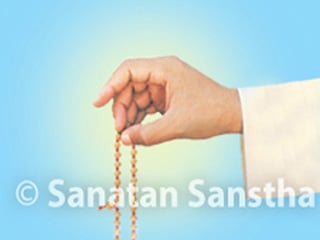 Chanting of Lord's Name: Best tool for observing silence ( maun vrat )
Chanting of Lord's Name: Best tool for observing silence ( maun vrat )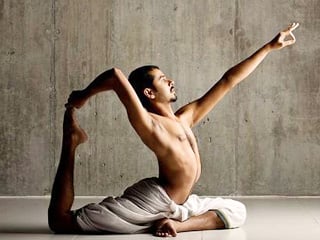 How does mudra assist in meditation?
How does mudra assist in meditation?